Victorian Graham bread made from scratch – so easy to make and so delicious!
Graham bread is named after reverend Sylvester Graham, who invented the bread in 1829. Victorians preferred white bread bought at the bakery because homemade brown bread was considered backward – a bread eaten by poor peasants. In the Victorian era, Graham bread was promoted as ‘health bread’ since Victorian white bread wasn’t made with white flour but with bleached whole wheat flour.
What Is Graham Bread?
Today Graham bread is made with Graham flour: Graham flour is whole wheat flour with finely ground endosperm and coarsely ground bran and germ. However, Victorian Graham bread recipes don’t mention Graham flour, they use unbolted flour (unsifted whole wheat flour). ‘Graham flour is the unbolted meal of wheat […] Whole wheat flour is made out of the better grades of wheat, with half of the bran left out’ (Bakers’ Bread, 1918) Graham considered whole wheat bread to be healthier than white bread. Graham also propagated a vegetarian Graham diet, alcohol abstinence, daily tooth brushing and frequent bathing. His followers were called Grahamites.
According to many different online sources original Graham bread was made without any leavening agent, such as yeast, baking powder, backing soda, sourdough … Instead it’s made with spontaneous fermentation with wild yeasts. I searched the internet and my antique recipe books for Graham bread recipes but I found not even one Graham bread recipe without yeast or baking soda and sour milk, not even a recipe from the Victorian era. So I chose a mid-Victorian Graham bread recipe with just some yeast and molasses. Molasses are used in the production of yeast, so that may help to rise the bread dough.
The Victorian Graham bread recipe is different to modern yeast bread recipes: it uses less yeast, it’s made without a pre-ferment or yeast sponge – all flour (and salt) is added at once – and the bread dough is not kneaded again after it’s risen. The recipe is from 1849/1850, published in Mrs. Putnam’s receipt book.
Mrs Putnam’s 1850s Graham Bread
- 4 qt unbolted wheat (unsifted whole wheat flour)
- teacup good yeast
- 1/2 cup molasses
- 1 tbsp salt
- enough warm water ‘to make a stiff dough’
You’ll find the adapted Graham bread recipe below.
Adapting The Victorian Graham Bread Recipe
There are many difficulties in recreating this bread recipe: I don’t know what teacups and cups Mrs Putnam might have used. I found different definitions of cup measurements: A modern teacup might hold something between 90 and 115 grams water and a cup something between 200 and 250 grams water.
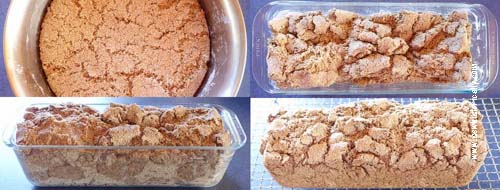
And I’m using modern yeast. In the Victorian era, yeast was usually brewers’ yeast, bought from a local brewer, or yeast made at home with hops or potatoes (Maybe I’ll make Victorian hops yeast when the hops are ripe in August or September.) I’m also using a modern oven. According to Mrs Beeton’s Household Management book (published in 1861): ‘Brick ovens are generally considered the best adapted for baking bread […] Iron ovens are more difficult to manage’ and it might be necessary for the bread to bake evenly to leave the oven ‘door open for a time’. Even wheat grains are different than they were in the Victorian era. Therefore I mixed wheat grains with wild einkorn wheat. Below is my adapted Graham bread recipe.
Victorian Graham Bread Recipe
Ingredients:
- 750g wheat grains
- 200g wild einkorn wheat
- cake yeast or dry yeast (enough for 500g flour)
- 1/2 tsp salt
- 2 tbsp molasses dissolved in lukewarm water
- lukewarm water

Directions:
I ground the grains in an electric grain mill. Then I sifted half of the flour through a coarse sieve because I needed new bran for my Victorian shampoo. 😉
I kneaded all ingredients together and added enough lukewarm water for a stiff dough. The dough is smooth and not at all sticky.

Already after four hours, the dough has more than doubled in size.
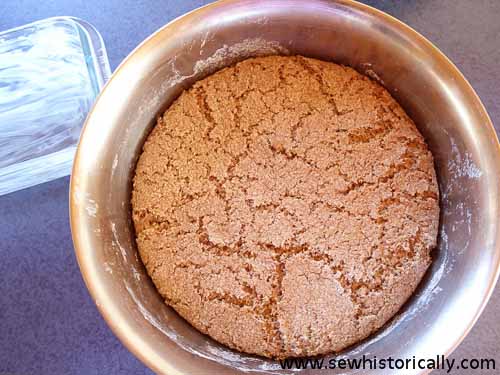
I let the bread dough rise overnight covered with a kitchen towel – the Victorian recipe says to let the dough rise for about six or eight hours.
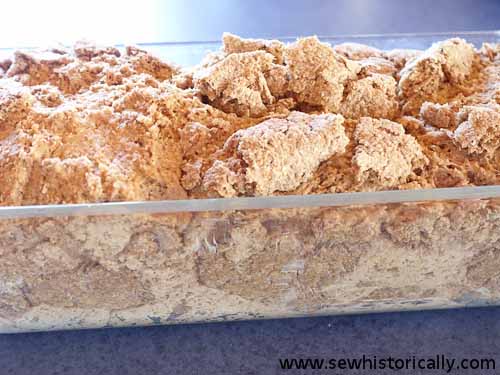
Then I greased a glass loaf pan with butter. The recipe says to wet the hands and put the dough into a pan without kneading it again. Then the bread dough should rise another inch – after about one hour the bread dough was ready for baking. As usual, the Victorian recipe doesn’t state how to bake the bread. I preheated the oven to 200°C and baked the bread for 50 minutes.
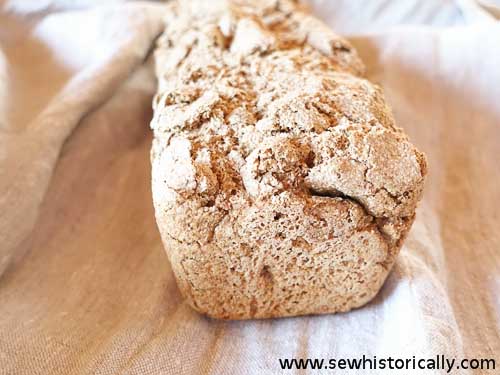
The Graham bread is my entry for the Historical Food Fortnightly challenge 16 – Foods named after people. I really like this Graham bread. It has a wonderful flavor: It tastes mild and not yeasty. Because of the unobtrusive, mild taste, the bread can be eaten with ham or with jam.
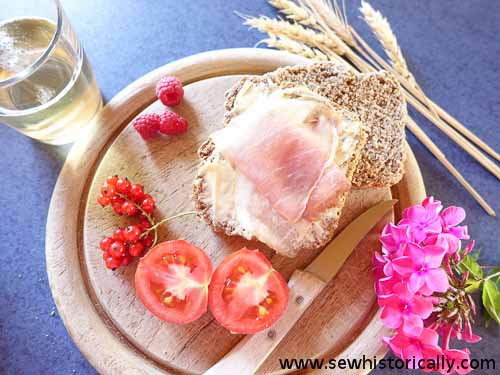
It tastes unusually saltless – compared to store-bought bread and other homemade bread recipes I tried.
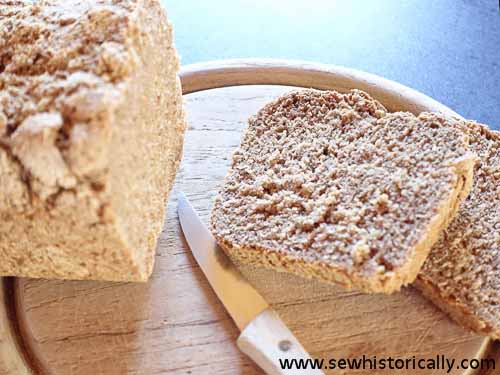
The bread is fluffy and has a crispy crust. And it’s much more filling than store-bought brown bread: One slice is more filling than two or three slices of store-bought bread. I’ll definitely bake the Graham bread again. 😀
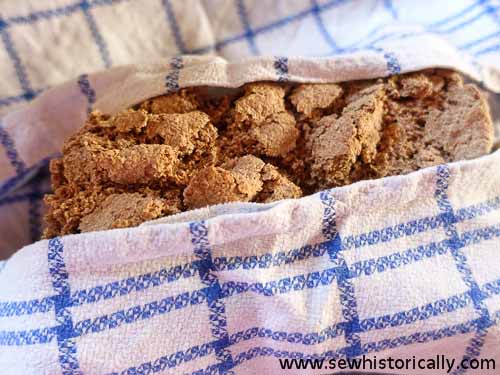
More Victorian Bread Recipes
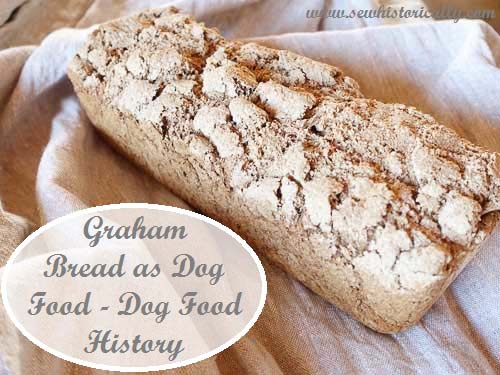
In the Edwardian era, Graham bread was also used as dog food – other breads were considered unhealthy for dogs.
Please Pin It!
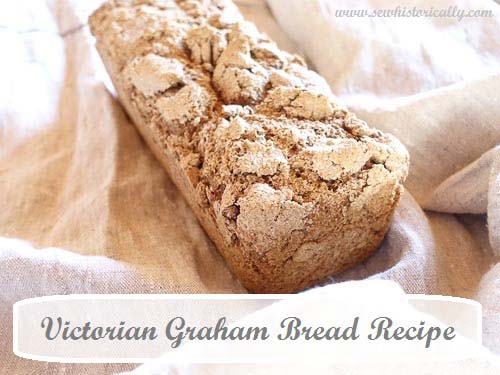
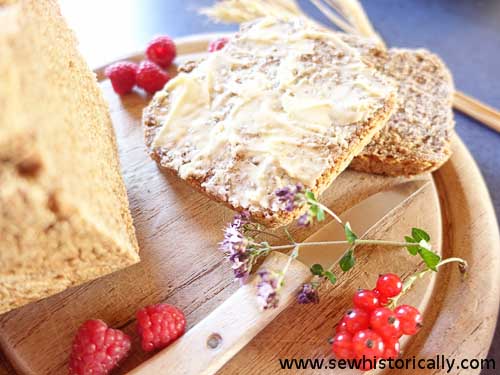
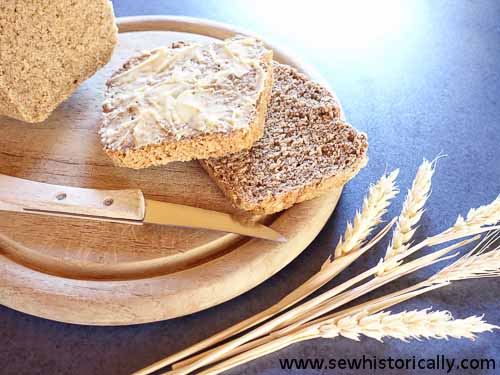
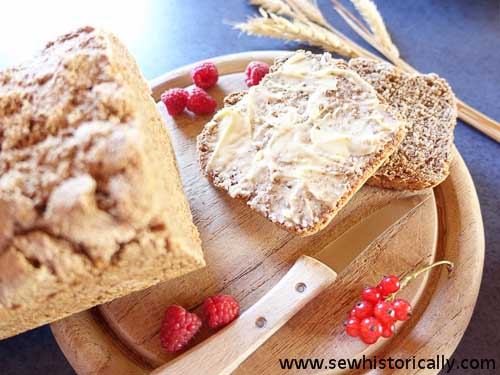
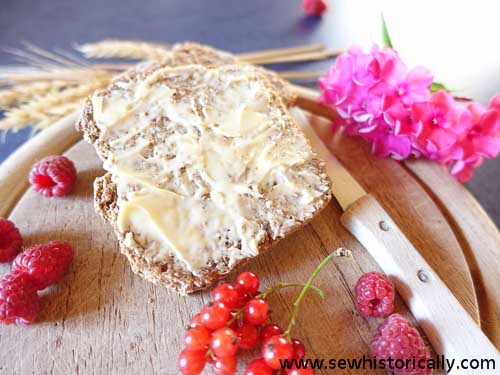
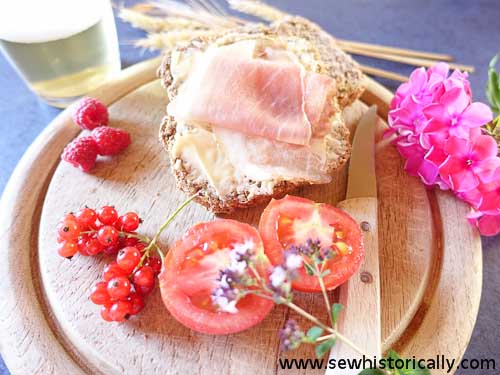
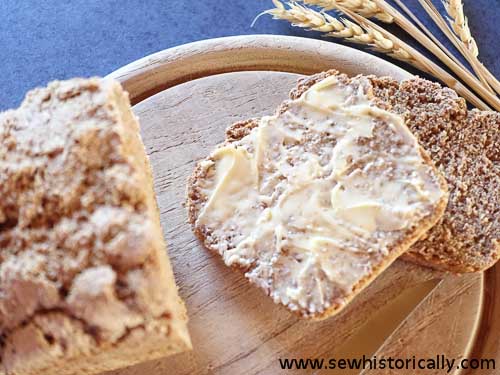

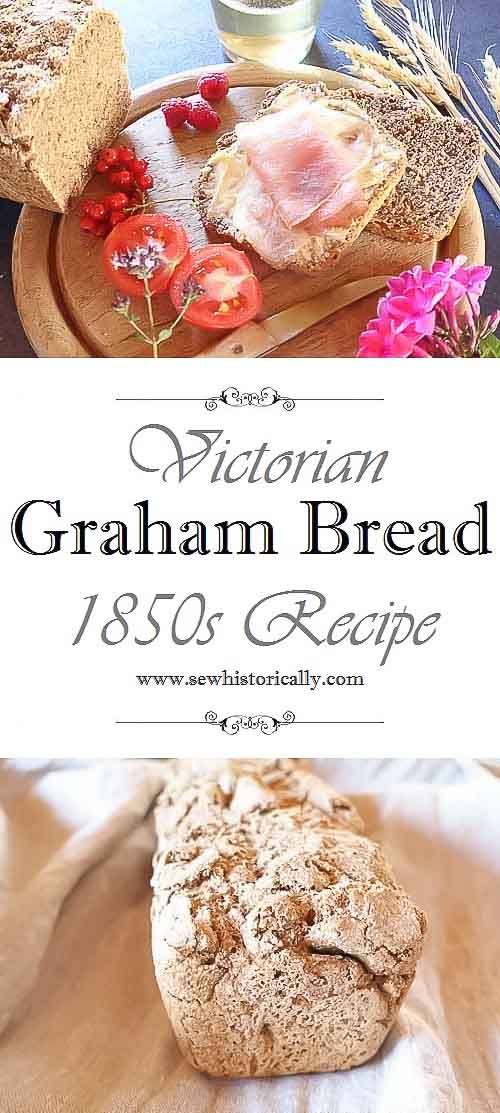
Pinned this – gotta try it!! Thanks for sharing on the what’s for dinner link up.
Thanks for pinning, Helen!